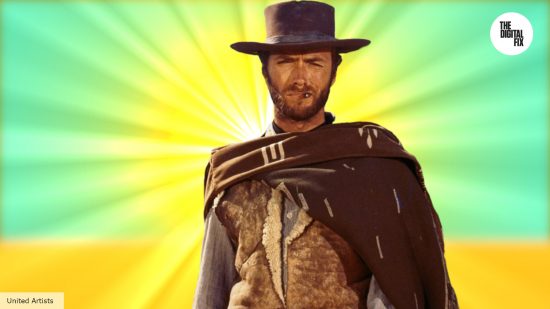Listen, we love Clint Eastwood at The Digital Fix. That’s why we’ve got pages of content dedicated to Clint Eastwood. Do you think a normal entertainment website would have a list of the best Clint Eastwood movies? No, they’re too busy putting together lists of the ‘best movies‘ ever made because they are cowards (Editor: Other sites also have best Clint Eastwood movie lists).
Still, as much as we enjoy the man’s work, we can admit that Clint’s made a few stinkers in his time. The 15:17 to Paris? Dreadful. The Rookie? Awful. Paint Your Wagon. Let’s just say it ain’t going on the best westerns list, and we’re not talking about the hotel chain.
We’re not the only ones to pick apart Eastwood’s work, either. In fact, one historian has a pretty major issue with a film widely regarded as one of Eastwood’s greatest pictures. We’re talking about The Good, the Bad, and the Ugly, arguably the jewel in Sergio Leone’s spaghetti western crown.
Now, in our The Good, the Bad, and the Ugly review, we heap praise on the 1966 film. But according to Garry Adelman, who was talking to Insider, The Good, the Bad, and the Ugly is about as historically accurate as a history book written by P.T. Barnum, and we don’t mean the handsome Hugh Jackman from the recent musical kind.
Adelman’s got several gripes with the film, which is set during the American Civil War, around the time of the Battle of Glorieta Pass, a real battle during the war that is credited with ending the Confederacy’s ambitions to conquer parts of the western United States.
So, what’s Adelman’s issue with the film? Well, he’s got several. Most notably, he doesn’t like some of the weapons we see being used during the battle.

“What stands out is the Gatling gun. The Gatling gun was around during the Civil War, but it was not used in 1862,” he explained. “It was also not used in New Mexico, where this is really set. You can count on two hands the number of Gatling guns that were actually used in the Civil War, and those used would have been barely at Petersburg and occasionally on Union Naval vessels.”
Adelman is also not impressed with the number of soldiers on the battlefield or their tactics. In the film, it seems like each side’s got hundreds of troops meeting in a huge melee, but that really wasn’t the case, according to the historian.
“There weren’t 800 soldiers on each side at the Battle of Glorietta Pass going over a 300-yard sort of meeting in the middle,” he claims. “That sounds more like medieval days than the Civil War.”

We actually did a bit of Googling, and according to the US National Park Service, which maintains the site of the battle for historical purposes, claims that each side had about 400 men. Now Wikipedia says it was 1,000 each, which sounds more like the film, but they don’t have a citation for those figures, so you could claim Batman turned up with anti-confederate gas, and it would hold as much water.
Finally, Adelman says the film’s third act, which revolves around destroying a bridge, is pretty accurate in terms of showing how a bridge would have been demolished, but, as far as he knows, no bridge was destroyed at Glorieta Pass.
“I’m not aware of soldiers on either side blowing up bridges during the Battle of Glorietta Pass to affect some sort of a victory,” he said.” Battles were often fought over transportation facilities. It was so important to control rivers and roads and railroads that bridges were natural targets of both armies during the Civil War.”

Now, it’s not all bad. Adelman does admit that the use of artillery fire is pretty accurate to the time, but that’s about all the praise he can muster. So what’s his final verdict? Well, Adelman scored the clip he was shown a “two out of ten,” adding that “this is so wrong that it’s hard to attribute to any one battle in this campaign.”
A two out of ten? That’s 20%, which is an F by our reckoning. So sorry, Leone looks like you’re going back to history class. If you love westerns, you’re probably already watching Yellowstone, so why not check out our guide to the Yellowstone cast?
We’ve also got a list of the best war movies to whet your whistle, if you prefer the darker chapters in humanity’s history, and a guide to all the new movies coming in 2024.
